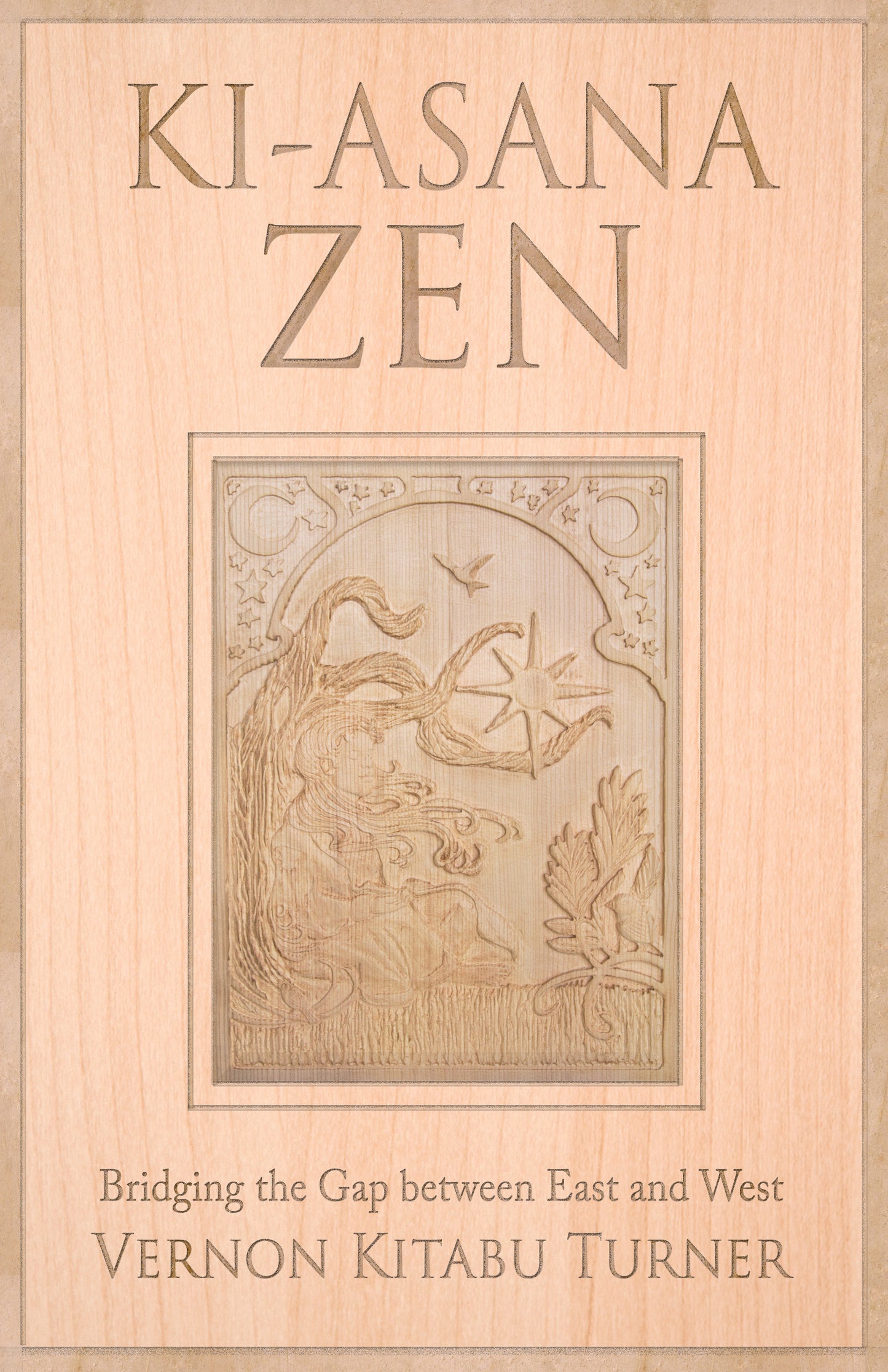Few feelings are more debilitating than fear. It may seem that fear comes from the outside, but it is always brought under control from within. Ki-Asana Zen is a practice dedicated to the restoration of resiliency and spontaneity to the mind. The resilient mind springs back from adversity. The spontaneous mind does not harbor fear because it does not cling to thought patterns of any kind. Such a mind taps into instinctive wisdom, called prajna paramita, in Sanskrit. When we have achieved this gift, we will know what to do when faced with a problem, even one which comes swiftly. Ki-Asana Zen is a meditation technique that is balanced, relatively easy but internally sound. It bridges the gap between east and west by embracing both its sun and moon nature . . . Ki (intensification) . . . Asana (posture). The power of it is not in what you see, but in the responses generated by what you do. With Ki-Asana you don’t meditate . . . IT meditates. This powerful but simple technique will teach you how to deal with any problem that comes your way.
Vernon Kitabu Turner is an author, spiritual guru, and martial arts master. In 1967, after a chance meeting with his first teacher, Nomura Roshi, Turner experienced a profound opening in both his meditation and martial arts practice. His other books include Soul Sword: The Way and Mind of a Zen Warrior and The Secret of Freedom.
Author Residence: Virginia Beach, VA
Contents
Introduction
Chapter 1
Meditation
Chapter 2
The Way
Chapter 3
Are You Listening?
Chapter 4
Feel this!
Chapter 5
Balance
Chapter 6
Reaching Out
Chapter 7
Chanoyu: Sipping the Universe Through a Cup of Tea
Chapter 8
Pseudo Meditation
Chapter 9
Zen Master Nomura Roshi: Journey to the East
Chapter 10
Bridging the Gap Between East and West
Chapter 11
The Ki-Asana Approach to Meditation
Chapter 12
What is the Sound of Two Hands Clapping?
Chapter 13
Clap On!
Chapter 14
Ki-Asana Zen
Chapter 15
Ki-Asana Zen: The Practice
Chapter 16
Instructions
About the Author
"Embodying diverse traditions, Turner's new approach deepens Zen meditation practice in the West . . . an innovative way for deepening Zen meditation practices in the West."
Introduction
With the advances in technology, the world has become more chaotic and stressful than ever before. We live in an era where we can communicate all over the globe in seconds, but those flashing moments that could be used to bring the world's inhabitants closer after often used to ignite hostilities, which are also magnified by technology. In only moments, the unthinkable happened. An almost complacent America isolated from the Third World by perceived wealth and privilege found itself reeling from multiple explosions as passenger jets became bombs. In mere seconds, hundreds of lives were lost in fire and smoke, and then thousands more in the rubble of collapsed buildings. And the numbers 9/11 became universal shorthand for terrorism.
In that same moment, countless Americans lost their inherited sense of security. With the fall of New York's--America's--Twin Towers, the World Trade Center, the earth shook and heaved beneath the nation. The national nervous system suffered shock.
While such an awesome shattering of the peace had never before been experience to that scale on the shores of the United States, other countries have known such horror. The Japanese were devastated by the first atomic bombs ever used against human beings. The mushroom cloud first blackened Hiroshima. Later, Nagasaki fell under its cursed shadow. Although that devastation took place in 1945, neither the memory nor effects of those events have faded.
Ceaseless battles in the Middle East gave rise to a generation of children who go to bed by the sound of weapons blasting, never knowing if they will wake up, or find their parents dead, victims of terror in the night. Then there is that violence which grows out of sheer greed, crimes such as drugs and arms dealing, human trafficking, and random acts of merciless criminals. As technology and machines have evolved (even our phones are deemed smart), human beings seemed to have regressed. To some people material things are more valuable than human life. Whether we are contemplating history or current vents, we can feel uncertain and unsafe about our future. Will there ever be place? Will we ever experience what being human is really all about?
The truth is that peace and uncertainty can be realized, and yes, it is possible to experience genuine human nature. But here is the paradox: you cannot include others. Real peace and certainty is a personal experience. The roots of such virtues do not sink into soil but rise up from the soul itself. It is common to pontificate, philosophize, and otherwise cast grandiose ideas about how things should be, as we apply our minds over circumstances, but the mirror mind is cracked and has been for a long time. What we bring out of that consciousness is flawed in many ways. A healing is in order. While we cannot bring about the healing--the sealing of the crack--we can create a condition that promotes healing to take place of its own accord.





